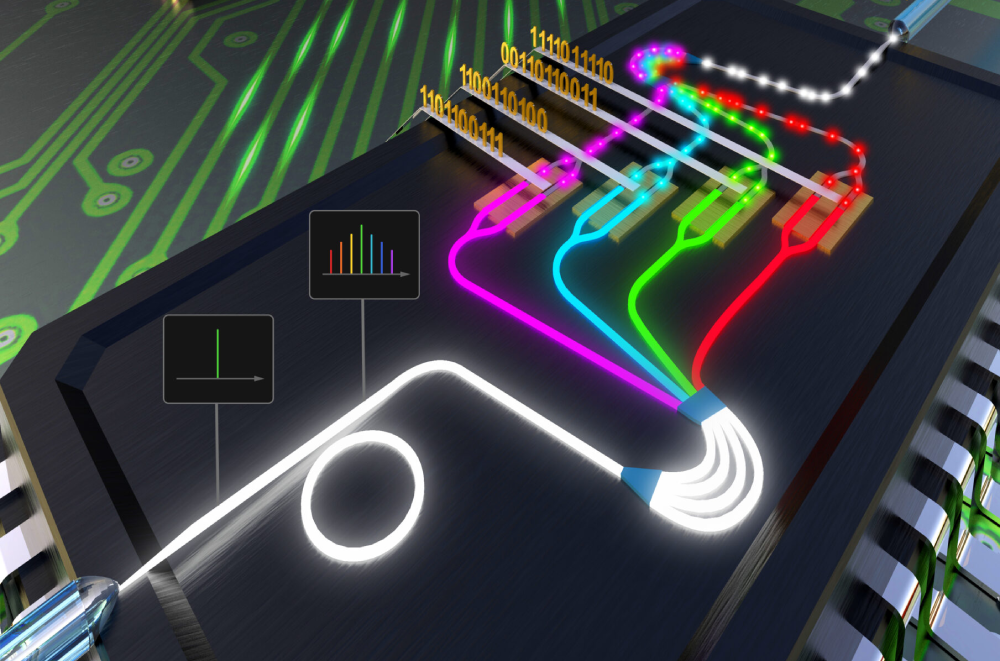
SILICON PHOTONICS
Silicon Photonics: Illuminating the Future of Data Transmission
Silicon photonics stands at the forefront of revolutionizing the landscape of data transmission and communication technologies. This cutting-edge field seamlessly combines the principles of optics with traditional silicon-based integrated circuits, unlocking a myriad of possibilities for high-speed, energy-efficient communication systems.
I. The Marriage of Light and Silicon
Silicon, long revered in the electronics industry for its semiconducting properties, has found a new partner in light. Silicon photonics leverages the ability of silicon to modulate light, creating a marriage of electronics and optics on a single chip. This synergy holds the promise of overcoming the limitations of copper-based interconnects, paving the way for faster and more efficient data transfer.
II. High-Speed Data Transmission
One of the primary advantages of silicon photonics lies in its ability to transmit data at unprecedented speeds. Traditional electronic interconnects face challenges such as signal degradation and latency. Silicon photonics, utilizing light as the medium for data transfer, mitigates these issues, enabling data rates that were once deemed unattainable. This breakthrough is particularly crucial in data centers, telecommunications, and high-performance computing.
III. Integration with Existing Silicon Technology
Silicon photonics seamlessly integrates with existing silicon technology, allowing for cost-effective manufacturing processes. This integration facilitates the creation of compact, power-efficient optical components directly on silicon chips, eliminating the need for separate optical components. This not only reduces production costs but also opens doors to the mass adoption of silicon photonics in various electronic devices.
领英推荐
IV. Applications Beyond Data Centers
While data centers have been early adopters of silicon photonics, the applications extend far beyond. The technology holds promise for telecommunications networks, enabling higher bandwidth and improved efficiency. Moreover, silicon photonics is making its mark in emerging fields such as quantum computing and biomedical sensing, showcasing its versatility and potential for groundbreaking innovations.
V. Overcoming Challenges
Despite its immense potential, silicon photonics faces challenges such as optical losses and manufacturing complexities. Ongoing research focuses on enhancing the efficiency of light modulation in silicon and streamlining production processes. As these challenges are addressed, silicon photonics is poised to become a cornerstone technology, transforming the way we transmit and process information
VI. A Glimpse into the Future
Silicon photonics is not merely a technological advancement; it represents a paradigm shift in the way we envision communication systems. As researchers continue to refine the technology, we can anticipate faster and more energy-efficient devices that redefine the boundaries of what is possible in the world of data transmission. Silicon photonics is not just illuminating the present; it is lighting the path towards a future where information flows seamlessly at the speed of light
.#snsinstitutions
#designthinking
#designthinkers
Freelance Data & Business Analyst | Transforming Data into Insights | SQL, Python, Power BI | Machine Learning & Storytelling with Data
8 个月Great post! I'm particularly excited about its applications beyond data centers, especially in telecommunications and emerging fields like quantum computing and biomedical sensing. Thanks for sharing this insightful piece!?
Land Mobile Radio Information , Millimeter Wave Technology Corporate Communicator
10 个月Silicon Photonics Industry worth $5.0 billion by 2028 Download PDF Brochure @ https://tinyurl.com/yc8dskrc
Open to Opportunities in Web Development, System Administration, or Cybersecurity | Skilled in Networking, Linux, and Server Management
1 年Awesome ??